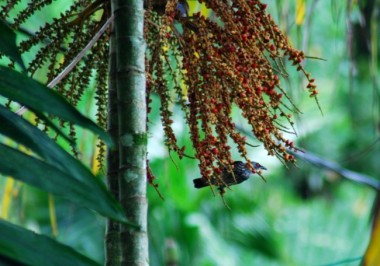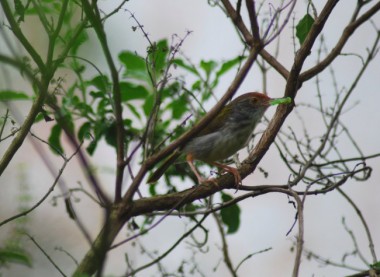Apr 28, 2012
Anti-Lynas And 'Clean-Up' Sit-Down At Independence Square


Sea of Yellow and Green - from PDRM's YouTube Channel

About 50,000 around Masjid Jamek, where we were


Just ordinary folks, like you and me

Ordinary, God-Fearing people.
Pudu:
http://www.youtube.com/watch?v=3Qrx6RZwZAI
KLCC:
http://www.youtube.com/watch?v=B-fp9rxLago&feature=en...
Masjid Negara:
15:37 | Permalink | Comments (0) | Tags: lynas, rare earth plant pahang, anti-lynas, perhimpunan hijau, bersih 3.0
Apr 13, 2012
Wildcrafted Food
The thing about keeping the farm environment as natural as possible is that there’s so much wildcrafted food around.
Taking a walk today in one of our ‘wild corners’, there ahead of us are some wild mushrooms:
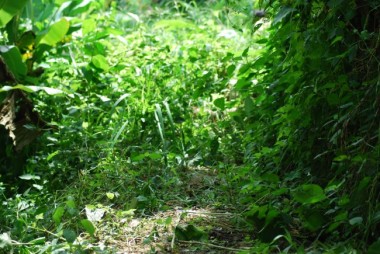
A corner kept 'wild' for its 'Qi'
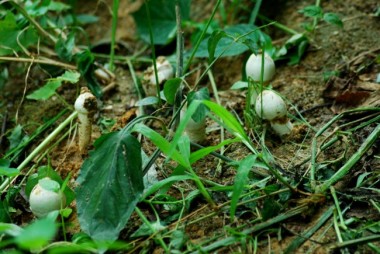
Cendawan Busut (Termitomyces albuminosa) or Termite-Hill Mushrooms just ahead of us.
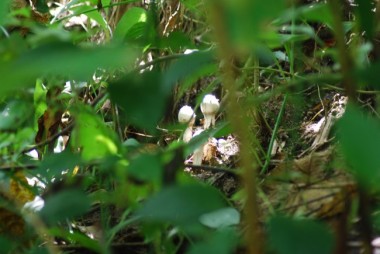
More mushrooms at the side, on slightly elevated grounds.
Further ahead of us, round a corner, a patch of daun meranti, a solanum nigrum variety that has a long history of safe consumption among village folks.
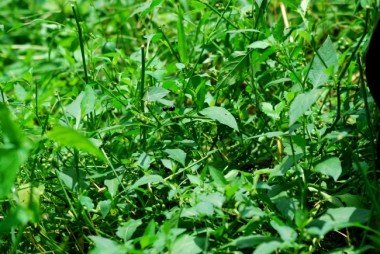
Solanum nigrum var. patch

Fruits of the plant, considered toxic in some varieties, especially the green fruits. On the safe side, best to avoid consuming them.
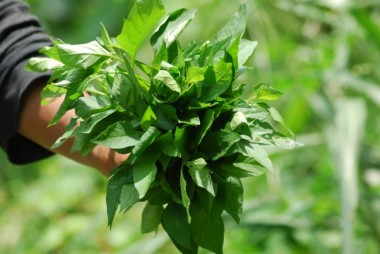
Delicious stir-fried.
Frankly, wildcrafted food is our preferred food. At any given day, we would have wild eels, mushrooms, fruits and so many different varieties of vegetables.

Ingredients for a 'wild' lunch: daun meranti, bunga kantan and some garlic.

Sweet yet bitterish daun meranti with a hint of kantan aroma, and of course garlic to bring it all together. A light, healthy lunch; great by itself or with some rice.
Wildcrafted foods are not bred to grow fast, nor bred to exhibit a certain characteristic such as a particular color, or a particular flavor, or in most cases, to make it sweeter.
In many ways, it would be a more “balanced” food. By this I mean you are not going to have fruits that are so sweet that it affects your glucose level adversely, or vegetables with excessive nitrates, etc.
These are foods made by Nature, not altered by man to suit man's taste-buds or to suit marketing and production requirements.
17:16 | Permalink | Comments (0) | Tags: wildcrafted food, solanum nigrum, daun meranti, slow food, bunga kantan, torch ginger, etlingera elatior
Apr 11, 2012
Birds Nesting At Our Farm - II
We were surprised to find that the nest of Treron Olax have not only hatched, but have fledged. There they were a family group, three fledglings and three adults hanging on to some branches of a tree about 10 meters away from their nests.
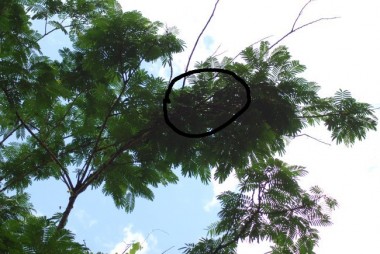
A flimsy platform in our petai tree was where they made their nests overlooking the staff kitchen and dining area and the noise of tractors and chattering workers. These are supposedly forest birds.
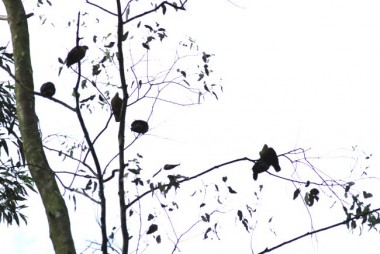
Three parents guarding over their fledglings. Sorry about the bad photography, clearly I need some lessons. The birds flew from their nests at 7am and hung on to this tree 10 meters away, for two hours.
Then with a loud flutter, as if by a common signal, they flew off at speed simultaneously towards the nearby forest. Wonder why they are not nesting in the forests? Poachers?
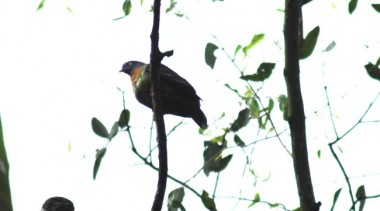
The male
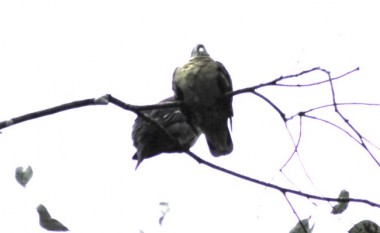
One of the females next to a fledgling.
Treron Olax or Little Green Pigeon is a resident bird in Malaysia. Will have to get better equipment to document all these birds at our farm, plus take some lessons.
Here's a couple of photos showing the birds in their glory from http://www.tomo-rhino.com/malaysia/
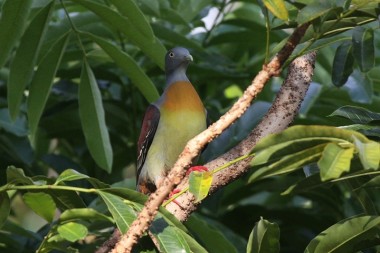
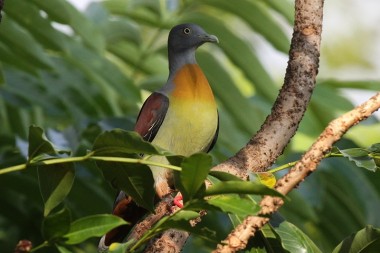
Treron Olax is a protected bird in Malaysia.
10:30 | Permalink | Comments (0) | Tags: little green pigeon, treron olax
Apr 09, 2012
Birds Nesting At Our Farm – I
When birds find your farm environment to be conducive, they become resident and no longer transcient. We can farm and yet we can have a bird sanctuary, sharing just a small percentage of our farming produce with the birds.
It is an honour that many birds, both common and rare have started to nest at our farm. Subsequent generations become increasingly tame and human-friendly.

Emerald Dove – two years ago they first started to appear; always flightly. Today they have started nesting at our farm in at least 5 locations.
Click for close up.
Yellow Vented Bulbul – they have nests all over our farm, and subsequent generations are no longer transcient making our farm their permanent home.
Click for Close Up
This juvenile Asian Glossy Starling is part of a flock hatched from nests in our farm.
And our personal favorite, the diminutive Tailor Bird, which goes about its business right next to us without a care. This bird was just 5 feet away from me while I was noisily cutting some brush. How’s that for trust?
13:05 | Permalink | Comments (0) | Tags: punai tanah, emerald dove, starling, asian glossy starling, tailor bird, bulbul, yellow vented bulbul, bird sanctuary
Apr 06, 2012
VRE - Public Health Threat?
Vancomycin Resistant Enterococci (VRE) is often indicative of antibiotic abuse. Farms that use sub-therapeutic antibiotic continuously may have animals that harbor VRE.
VRE have been found in many countries in poultry meat, pork, beef, milk and cultured fish.
VRE poses a potential public health threat.
In 2005, our country reported a case of Community-Acquired Infection (CAI) of VRE. The report is here.
The point of infection is speculative in the report, but it does raise the red flag in so far as the possibility of CAI of VRE is concerned, in our country. This means that the possibility of infection have now moved out from the hospital environment to the community.
In the light of the possibility of community acquired infection of VRE, responsible farmers must do self-monitoring and self-testing to prevent selling meats that are infected with VRE.
All our poultry are tested to be free from Salmonella Enteritidis and VRE before processing. Here’s the test results on VRE in our recent samples sent to the lab :
Click on table for close-up
VRE infection is especially dangerous for those who are immune-compromised, e.g. cancer patients, those with heart problems, kidney problems, etc.
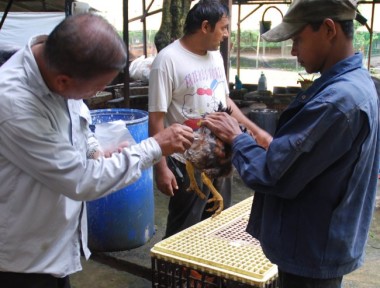
Farm manager Razaly taking a swab.
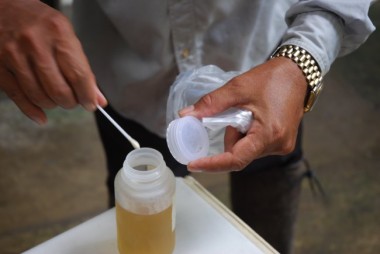
Preserving the samples in BP Water.
Testing samples from the farm is essential to ensure result integrity as samples from processed chickens may reflect cross contamination during handling.
16:52 Posted in Blog, Chickens | Permalink | Comments (0) | Tags: vre, se, salmonella enteritis, vancomycin resistant enterococci, antibiotic abuse
Apr 02, 2012
Living (And Farming) With Nature
The farm is a bird sanctuary of sorts. This statement seems to be contradictory at first sight, but our farm is full of birds of various kinds (about 50 different species at last count). We can farm and yet we can live in harmony with wildlife.
If you want to have birds in your farm, you must not allow your workers to kill any bird, not even one.
Birds living in close proximity of each other will know if one dies, even of different species. A farm like ours is like a huge giant aviary. The birds are regulars, or have made their homes at the farm. If you kill one, all the rest will know of the death. After a few deaths, they will start to leave.
And why kill them? Look at the ‘enhancement’ they contribute to the farm environment:
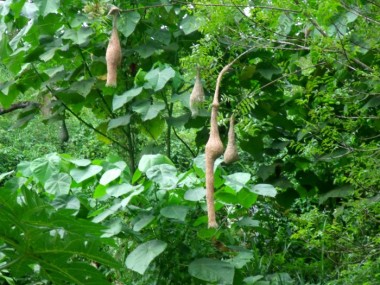
These are nests of weaver birds. They have made them hanging from a neem tree we planted in a chicken padang (field). At the background you can see one that’s green in color. The birds have quickly picked up the grass that we have cut to weave a nest. It will dry out gradually. These nests are the most effective against the many snakes that have made the farm their home too. It’s going to be tough for a regular snake to reach the entrance of the nest.
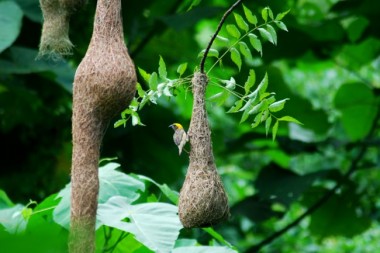
Experts say, birds will bring disease to a chicken farm. This has not been our experience (11 years now). All you need is the will to live with nature, and put to practice modern scientific knowledge about dieases. The costs involved is marginal. The benefits to bio-diversity and the ecology, immeasurable.
Spread the word; it can be done.
10:42 Posted in Blog, Nature Farming, Sustainable Farming | Permalink | Comments (0) | Tags: weaver birds, weaver bird nests, ploceus philippinus, burung tempua, baya weaver, co-existing with nature









